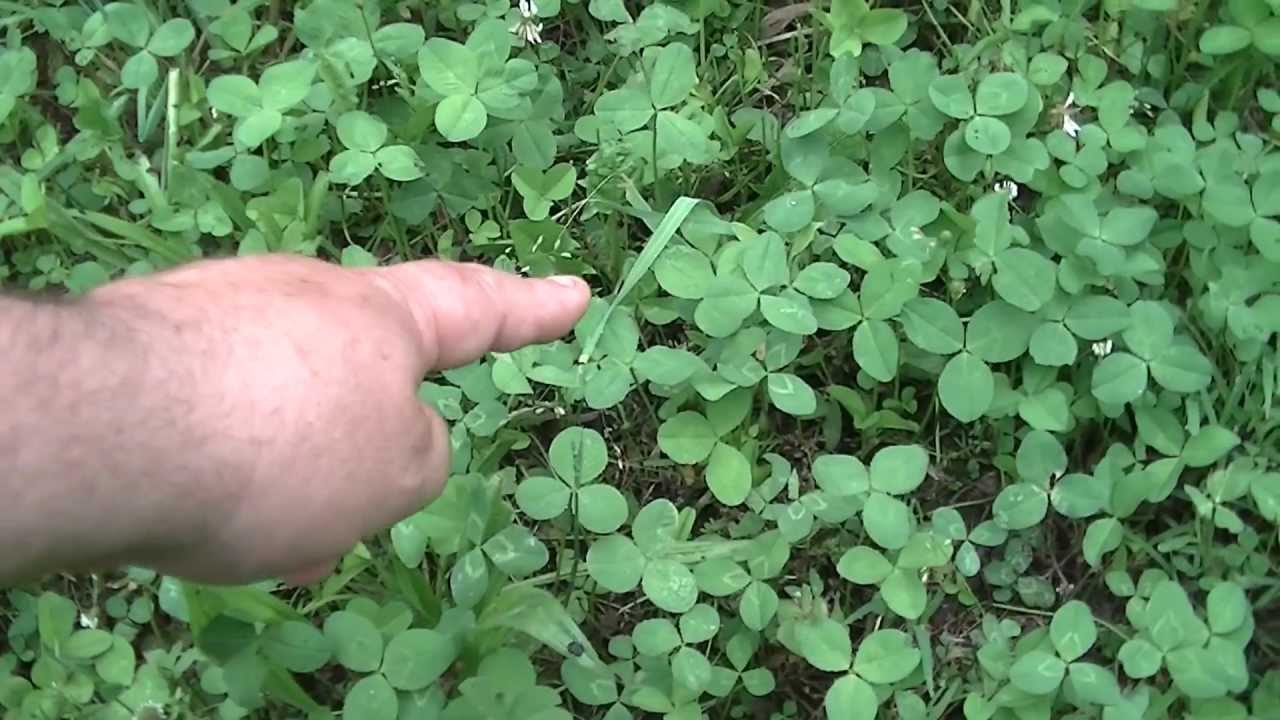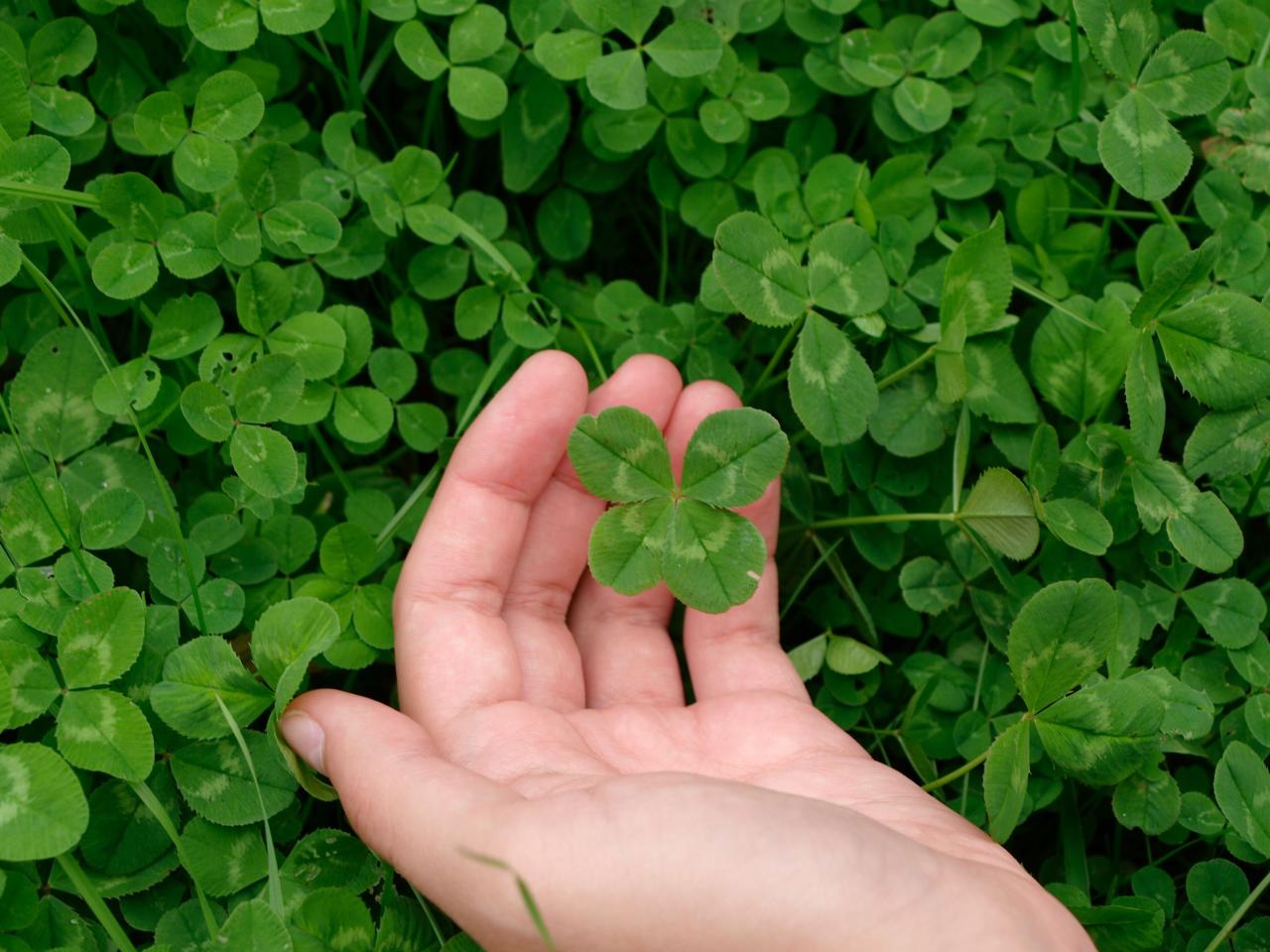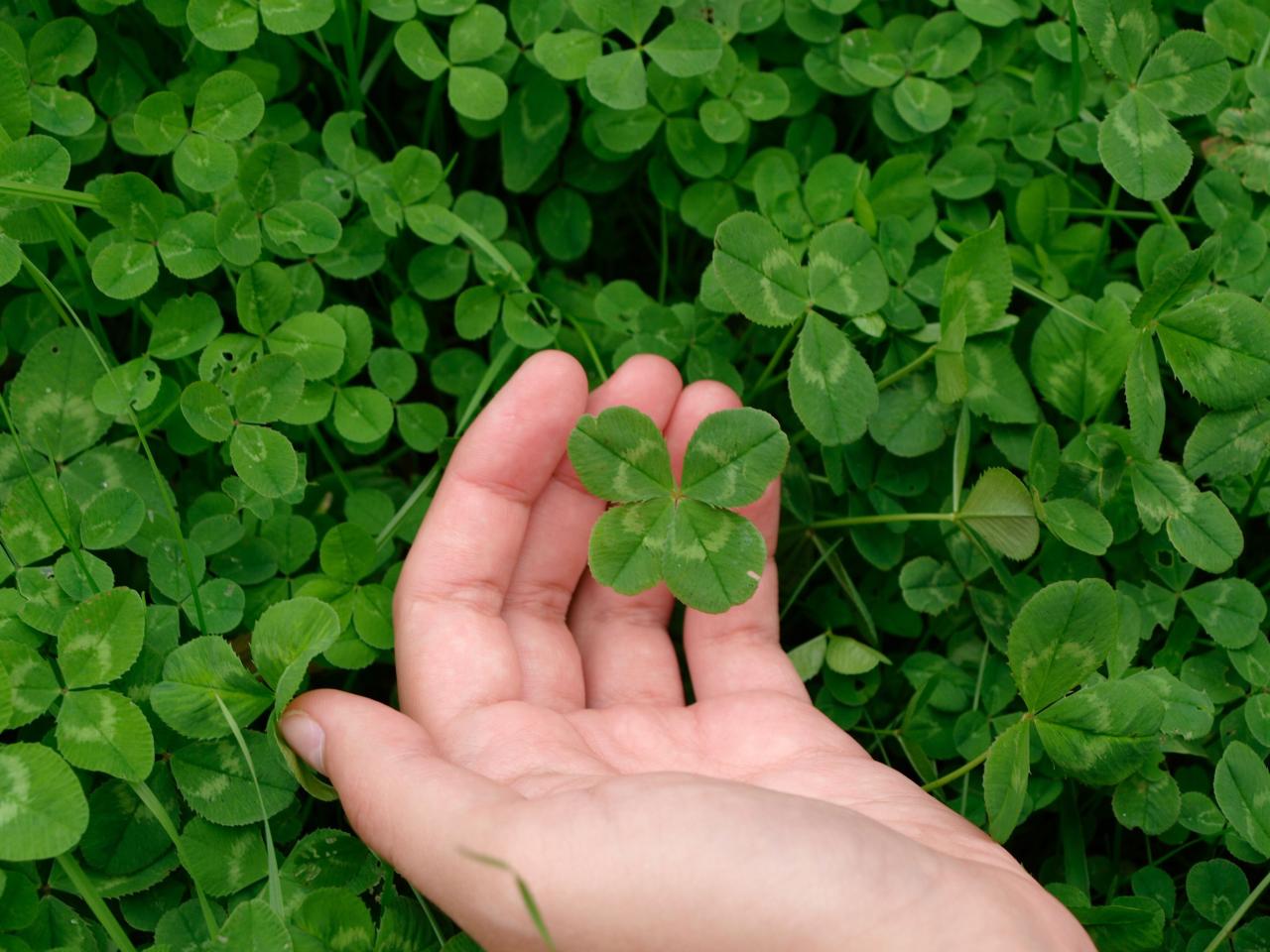The Essential Guide to Finding and Growing Four Leaf Clovers delves into the fascinating world of these rare botanical treasures. Beyond the legend and symbolism, we’ll explore the scientific reasons behind their existence, providing practical tips for locating them in the wild and even cultivating your own patch of lucky clovers.
From understanding the genetic mutation that causes four-leaf clovers to occur, to learning how to identify clover varieties and their unique characteristics, this guide equips you with the knowledge and skills needed to embark on your own clover-hunting adventure. We’ll also delve into the importance of patience and observation, highlighting the benefits of spending time in nature and developing a keen eye for detail.
The Fascinating World of Four-Leaf Clovers
The four-leaf clover, a rare variation of the common three-leaf clover, holds a special place in folklore and popular culture. Its discovery is often associated with good luck, making it a cherished symbol of hope and fortune.
The Legend and Symbolism of Four-Leaf Clovers
The legend of the four-leaf clover dates back centuries, with roots in Irish folklore. It is said that the four leaves represent faith, hope, love, and luck. This symbolism has been widely adopted across cultures, making the four-leaf clover a popular motif in jewelry, clothing, and other decorative items.
The Genetic Mutation Behind Four-Leaf Clovers
The formation of a four-leaf clover is a result of a genetic mutation that affects the development of the plant’s leaves. The mutation occurs in the genes responsible for leaf formation, causing an extra leaflet to develop. This mutation is considered a rare occurrence, which explains the rarity of four-leaf clovers.
The Scientific Reasons for the Rarity of Four-Leaf Clovers
The rarity of four-leaf clovers can be attributed to several factors. The mutation responsible for their formation is not always passed on to offspring, making it difficult for the trait to persist in a population. Additionally, the environment can influence the expression of the mutation.
Factors such as soil quality, sunlight exposure, and temperature can all play a role in determining the likelihood of a four-leaf clover developing.
Finding Your Lucky Charm: The Essential Guide To Finding And Growing Four Leaf Clovers

Embarking on a quest for a four-leaf clover requires a keen eye and a bit of patience. Understanding the characteristics of clover plants and their preferred habitats is crucial to your success. The following guide will equip you with the knowledge and strategies to increase your chances of finding your own lucky charm.
Identifying Clover Plants
Clover plants belong to the genus
-Trifolium*, which encompasses a diverse range of species, including the ubiquitous three-leaf clovers. To distinguish them from other species, look for these key features
While finding a four-leaf clover is often attributed to luck, cultivating a thriving patch of clovers requires more than just a lucky charm. Understanding the basics of clover care, like providing adequate sunlight and proper watering, is crucial. For additional tips on achieving lush growth, consider consulting resources like Rodgers Plant Care Tips: How to Achieve Lush Growth , which offers valuable insights on plant care practices.
With the right knowledge and attention, you can create a flourishing clover patch, increasing your chances of finding that elusive four-leaf clover.
- Leaf Structure:Clover leaves are typically trifoliate, meaning they have three leaflets. These leaflets are arranged in a whorl, with a central stalk connecting them to the stem.
- Leaf Shape:Clover leaflets are usually heart-shaped, oval, or obovate (wider at the top). The margins are typically smooth or slightly toothed.
- Leaf Color:Clover leaves can range in color from bright green to dark green, sometimes with a hint of purple or reddish-brown. The color can vary depending on the species and growing conditions.
- Flower Structure:Clover flowers are typically small and clustered in spherical or cylindrical heads. These heads are often called “umbels” and can be white, pink, red, or purple, depending on the species.
Searching for Four-Leaf Clovers
The best places to search for four-leaf clovers are typically in areas with abundant clover growth. Here’s a step-by-step guide to help you on your quest:
- Choose a Location:Look for sunny, well-drained areas with plenty of clover growth. Lawns, fields, meadows, and parks are good starting points.
- Scan the Area:Use a systematic approach, scanning the ground carefully. Start by looking at the base of the clover plants, as four-leaf clovers tend to grow closer to the ground.
- Be Patient:Finding a four-leaf clover takes time and patience. Don’t get discouraged if you don’t find one right away. Keep searching and you’ll eventually stumble upon your lucky charm.
- Utilize the Right Conditions:Clover growth is often influenced by weather patterns and seasonal changes. Search for four-leaf clovers in the spring and summer when clover plants are actively growing.
Common Clover Varieties
Here’s a table comparing common clover varieties, highlighting their distinctive characteristics:
Clover Variety |
Leaf Shape |
Leaf Color |
Flower Color |
Other Characteristics |
|---|---|---|---|---|
White Clover (*Trifolium repens*) |
Heart-shaped |
Bright green |
White |
Common in lawns and meadows; forms dense mats |
Red Clover (*Trifolium pratense*) |
Ovate |
Dark green |
Reddish-purple |
Often used for forage and soil improvement |
Crimson Clover (*Trifolium incarnatum*) |
Obovate |
Green with reddish-brown veins |
Deep crimson |
Popular as a cover crop; attracts pollinators |
Alsike Clover (*Trifolium hybridum*) |
Obovate |
Light green |
Pinkish-white |
Tolerant of wet conditions; good for pastures |
Cultivating Your Own Clover Patch
Having a patch of clover in your garden is not only a great way to attract pollinators and create a beautiful green carpet, but also an excellent opportunity to increase your chances of finding a four-leaf clover. By understanding the ideal conditions for clover growth and following a few simple steps, you can create a thriving clover patch that will provide you with endless opportunities to search for your lucky charm.
While finding a four-leaf clover in the wild can be a lucky discovery, for those seeking a more consistent source of these lucky charms, consider cultivating your own patch. The Secrets to Growing Your Own Four Leaf Clover at Home provides valuable insights into the optimal conditions for growing these rare plants, from seed selection to proper care.
By following these tips, you can increase your chances of finding a four-leaf clover in your own backyard, ensuring a constant supply of luck for yourself and those you share them with.
Ideal Conditions for Clover Growth
Clover thrives in a variety of environments, but it prefers specific conditions that maximize its growth and health. Understanding these requirements will help you create the perfect environment for your clover patch.
Soil Type
Clover prefers well-drained soil that is slightly acidic to neutral, with a pH range of 6.0 to 7.0. This type of soil allows for proper root development and prevents waterlogging, which can damage the plants.
Sunlight
Clover can tolerate both full sun and partial shade, but it grows best in areas that receive at least four hours of direct sunlight daily. However, in hot climates, it may benefit from some afternoon shade to prevent wilting.
Water Requirements
Clover is relatively drought-tolerant once established, but it needs consistent moisture, especially during the first few weeks after planting. Aim for a regular watering schedule, ensuring the soil is moist but not soggy.
Sowing Clover Seeds
Sowing clover seeds is a simple process that can be done in spring or fall. Here’s a step-by-step guide:
- Prepare the soil:Till the soil to a depth of 6 inches and remove any weeds or debris. This ensures proper drainage and allows for optimal seed germination.
- Scatter the seeds:Spread the seeds evenly over the prepared soil. You can use a seed spreader or simply scatter them by hand. Aim for a density of about 10 to 15 seeds per square foot.
- Water thoroughly:After sowing the seeds, water the soil thoroughly to help them settle and begin germination. Keep the soil consistently moist until the seedlings emerge.
- Thin the seedlings:Once the seedlings are a few inches tall, thin them out to ensure proper spacing. This allows for better air circulation and prevents overcrowding.
Caring for Young Clover Plants
Once your clover plants are established, they require minimal care. However, there are a few important practices to ensure their health and longevity.
- Regular watering:During the first few weeks after planting, water your clover plants regularly, especially during dry periods. Once established, they can tolerate some drought but benefit from occasional watering, especially during hot summers.
- Weed control:Keep the area around your clover patch free of weeds to prevent competition for nutrients and sunlight. You can use a hoe to manually remove weeds or apply a pre-emergent herbicide to prevent weed growth.
- Fertilization:Clover is a nitrogen-fixing plant, meaning it can convert atmospheric nitrogen into a form that plants can use. This reduces the need for additional nitrogen fertilizer. However, if you notice your clover plants are struggling, you can apply a balanced fertilizer in spring or early summer.
Stages of Clover Growth
Clover growth can be divided into several distinct stages, each with its own characteristics.
- Seed Germination:The first stage begins with the seed absorbing water and swelling. The seed coat then ruptures, and a tiny root emerges, followed by a shoot that grows upwards towards the sunlight. This stage typically takes 7 to 14 days, depending on the temperature and moisture conditions.
- Seedling Stage:During this stage, the young clover plant develops its first true leaves, which are typically trifoliate, meaning they have three leaflets. The plant also develops a taproot, which anchors it in the soil and absorbs water and nutrients.
- Vegetative Stage:As the clover plant matures, it produces more leaves and stems, forming a dense, spreading carpet. This stage is characterized by rapid growth and the development of a strong root system.
- Reproductive Stage:When the clover plant reaches maturity, it produces flowers, which are typically small and white or pink. These flowers develop into seed pods, which contain the seeds that will produce the next generation of clover plants.
The Power of Observation

Finding a four-leaf clover is not just about luck; it’s about cultivating a keen eye for detail and a patient approach to exploring the natural world. It’s about understanding that while these rare clovers are a symbol of good fortune, the journey to finding them is a rewarding experience in itself.
The Importance of Patience and Persistence
Patience is paramount when searching for four-leaf clovers. These rare plants are not readily apparent, and their discovery often requires careful observation and persistence. It’s a treasure hunt that involves slowing down, taking your time, and immersing yourself in the environment.
The more time you spend searching, the greater your chances of spotting a four-leaf clover.
The Benefits of Spending Time in Nature
Spending time in nature offers numerous benefits beyond the possibility of finding a four-leaf clover. It reduces stress, improves mental clarity, and promotes a sense of peace and well-being. Connecting with the natural world encourages a deeper appreciation for the beauty and complexity of life.
As you become more attuned to the subtle details of your surroundings, you’ll develop a keen eye for the unexpected, which includes spotting those elusive four-leaf clovers.
Inspirational Stories and Anecdotes, The Essential Guide to Finding and Growing Four Leaf Clovers
There are countless stories of people who have found four-leaf clovers and the impact these discoveries have had on their lives. For some, it’s a simple reminder of good luck and a source of joy. For others, it’s a catalyst for positive change, a sign that they are on the right path, or a symbol of hope and resilience.
“I found a four-leaf clover while hiking in the mountains. It was a small, delicate plant, but it felt incredibly special to me. It reminded me that even in the most unexpected places, beauty and good fortune can be found.”
Anonymous
The search for four-leaf clovers is a journey of discovery. It’s a reminder that even in the midst of the ordinary, the extraordinary can be found if we are patient, persistent, and willing to open our eyes to the beauty that surrounds us.
Ultimate Conclusion

Whether you’re seeking a lucky charm or simply a deeper connection with nature, this guide provides the tools and inspiration to uncover the secrets of four-leaf clovers. Embrace the thrill of the hunt, cultivate your own patch of luck, and let the magic of these rare botanical treasures enrich your life.
FAQ Explained
How rare are four-leaf clovers?
The occurrence of four-leaf clovers is estimated to be around 1 in 10,000. This rarity is attributed to a genetic mutation that affects leaf development.
Are there any other lucky charms in nature?
While four-leaf clovers are perhaps the most well-known, other lucky charms in nature include horseshoe crabs, ladybugs, and even certain types of mushrooms.
What are the best times of year to search for four-leaf clovers?
The best time to search for four-leaf clovers is during the spring and summer months when clover plants are actively growing.
